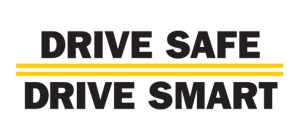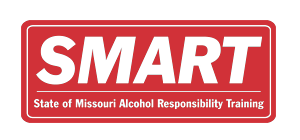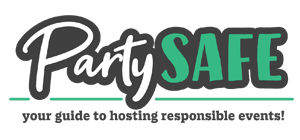
62%* of Missouri college students drive a vehicle while on campus for school.
It is imperative that these students are mindful of their driving habits and practices to keep themselves and others safe. Impaired and distracted driving negatively affects drivers visually, manually, and cognitively. Unsafe driving practices put the driver, passengers, other vehicles, and pedestrians in danger. For more information on safe driving in Missouri, visit mopip.org/DSDS
Scope
National Data
In 2021, 5,623 college-aged vehicle accident victims died in a single year. Another 567,000 sustained injuries.1
Impaired Driving
Every day, about 34 people in the United States die in drunk-driving crashes — that’s one person every 42 minutes. In 2023, 12,429 people died in alcohol-impaired driving traffic deaths.1
56% of drivers involved in serious injury and fatal crashes tested positive for at least one drug (such as marijuana/cannabis).2
Distracted Driving
The risk of being involved in a critical crash is 23 times greater if the driver texts while driving.4
In 2024, reports showed that there were roughly 400,000 accidents caused by distractions, with cell phones being the primary distraction. With this, there were nearly 3,000 deaths attributed to distracted driving, the National Highway Traffic Safety Administration (NHTSA), reports that 14% of all traffic related fatalities were from distracted driving.4
Seatbelt Use
For a front seat passenger vehicle occupant, safety restraints can reduce the risk of fatal injuries by 45% . Although approximately 92% of people wear seatbelts, millions do not.3
Missouri Data
In 2023 there were 359 speed related fatalities in Missouri.5
Of Missouri students who drive a vehicle while attending classes at their university:
| Never Text and Drive | Never Talk on a Phone while Driving | Always Wear a Seatbelt |
| 28% | 12% | 89% |
Data is from the 2025 Missouri Assessment of College Health Behaviors (MACHB) survey
Blood Alcohol Content (BAC)
BAC is the amount of alcohol in a person’s body. A 0.08% BAC is the legal limit for those 21+ driving under the influence (DUI) or driving while impaired (DWI). The legal limit for those under 21 is 0.00% BAC.
Designated Driver
A designated driver is someone who has not consumed any alcohol and/or other drugs, not the person who is “least drunk.” A designated driver is 100% sober.
Call a taxi/rideshare service or a sober friend to pick you up.
Visit CHEERS to the Designated Driver! to learn more about our CHEERS to the designated driver program, and see what establishments near you offer free non-alcoholic beverages to the designated driver.
Visit Drive Safe Drive Smart / Partners in Prevention for more information about safe driving.
Data Briefs
At a Glance
Volume 14
Volume 13
- Volume 13, Number 4: Substance-Impaired Driving
- Volume 13, Number 1: Key Findings from the 2024 Missouri Assessment of College Health Behaviors
Volume 12
- Volume 12, Number 4: Substance-Impaired Driving
- Volume 12, Number 1: Key Findings from the 2023 Missouri Assessment of College Health Behaviors
Volume 11
Volume 10
- Volume 10, Number 4: Substance-Impaired Driving
- Volume 10, Number 1: Key Findings from the 2021 Missouri Assessment of College Health Behaviors
Volume 9
- Volume 9, Number 5: Substance-Impaired Driving
- Volume 9, Number 1: Key Findings from the 2020 Missouri Assessment of College Health Behaviors
Volume 8
- Volume 8, Number 6: Alcohol Impaired Driving among Missouri College Students
- Volume 8, Number 1: Key Findings from the 2019 Missouri Assessment of College Health Behaviors
Volume 7
- Volume 7, Number 4: Students who Frequently Drink and Drive
- Volume 7, Number 1: Key Findings from the 2018 Missouri Assessment of College Health Behaviors
Volume 6
- Volume 6, Number 7: Substance-Impaired Driving
- Volume 6, Special Edition 1: Key Findings from the 2017 Missouri Assessment of College Health Behaviors
Volume 5
Volume 4
- Volume 4, Number 12: Drinking and Driving
- Volume 4, Number 6: An Update on Texting and Driving Among Missouri College Students
Volume 2
- Volume 2, Number 10: An Update on Texting and Driving among Missouri College Students
- Volume 2, Number 3: Safety Belt Usage Among Missouri College Students
Volume 1
Best Practices
Safety
- Be sure to have the proper information in your vehicle, including your driver’s license, proof of paid insurance, and your vehicle registration at all times.
- Safety belts should be worn at all times. When a vehicle is involved in a crash, passengers are still traveling at the vehicle’s original speed at the moment of impact.
- Avoid speeding and aggressive driving by leaving early and allowing extra time to get to your destination.
- Always keep a safe distance from the vehicle ahead of you.
- Some prescription and non-prescription medicines may affect your driving. Be sure to talk to your doctor or read the “When Using this Product” section on the label that mention drowsiness or impaired driving.
- Keep your eyes on the road and your emotions in check, put distractions down and out of reach, and do not reach for items while driving.
- Make it a priority to get enough sleep to avoid driving drowsy. Drinking caffeinated drinks is not always enough.
Impaired and Distracted Driving
- Driving while impaired is illegal. Consumption or use of alcohol and/or other drugs slows reaction time, decreases awareness and impairs judgment.
- Texting while driving affects you visually, manually, and cognitively.
- Prevent Impaired Driving – A CADCA Toolkit
Weather
- Check the weather forecast before departing.
- If there is rain, fog, snow, or other inclement weather, turn on your headlights.
- In foggy weather, do not use your brights.
If you are involved in a crash…
As a driver or a passenger, remember the important steps to stay safe after the crash:
- Before exiting your vehicle, watch for on-coming traffic.
- Check for injuries.
- Always call the police when an injury or fatality is involved.
- If you cannot move your vehicle, protect the scene with flares or by raising your hood.
- Exchange contact information with other drivers involved.
- Never leave the scene of a crash without exchanging information or calling the police, when appropriate.
National and Missouri Resources
National Resources
- U.S. Department of Transportation
- Drowsy Driving: Asleep at the Wheel (CDC)
- Caution: Some Over-the-Counter Medicines May Affect Your Driving (FDA)
- National Highway Traffic Safety Administration
- Reducing Your Teen’s Risk (NSC)
- Counting Sheep Drowsy Driving
- Teen Driving Safety: A Guide for New Drivers
- Distracted Driving Information & Guidance
- DriveitHOME™ – National Safety Council
- 2020 Drowsy Driving Statistics and Infographic
- Distracted Driving Information & Guidance :: SR22 Insurance
- Collegiate Traffic Safety Toolkit from NASPA and Healthy Colleges Montana
- Insurance Institute for Highway Safety (IIHS) Fatality Facts Yearly Snapshot
Missouri Resources
- Missouri Department of Transportation
- Missouri Coalition for Roadway Safety
- Buckle Up, Phone Down Campaign
- Smart Riders Child Traffic Safety Program
- Traction Teen Driving Program
Inclusion of a particular resource is not an official endorsement from Partners in Prevention or any of our funding sources.
PIP Resources
Statewide Programs
CHEERS to the Designated Driver is a designated driver incentive program that works with bars, restaurants, and nightclubs in Missouri to provide free non-alcoholic drinks to designated drivers. Visit CHEERS to the Designated Driver! to learn more.

Drive Safe, Drive Smart is an educational and media campaign designed to teach college students about safe driving behaviors to prevent impaired, distracted, drowsy, and aggressive driving. Visit Drive Safe. Drive Smart. to learn more.

The State of Missouri Alcohol Responsibility Training (SMART) is a free online training for alcohol servers and sellers in Missouri. The training covers proper ID checking practices and valid forms of ID, prevention of service to minors, signs of intoxication and prevention of service to intoxicated patrons. Visit SMART to learn more.

Party Safe is a free online training for college students in Missouri to help them hold safe and responsible events. The training covers general party and event planning skills, alcohol and responsibilities when providing it, how to prevent issues and deal with emergencies, and how to prevent impaired driving. Visit Party Safe to learn more.

Toolkits
PIP has developed a Safe Driving Toolkit to assist campus prevention staff and administrators in promoting safe driving behaviors. You can find the toolkit on the Safe Driving Toolkit page of our website.
Educational Materials
PIP has developed brochures, social media images and playbooks, and other resources to assist campuses in educating students about safe driving behaviors. Email our staff at pip@missouri.edu to access resources.
Citations
- National Highway Traffic Safety Administration (NHTSA), 2023, Drunk Driving – https://www.nhtsa.gov/risky-driving/drunk-driving
- Update to Special Reports on Traffic Safety during the COVID-19 Public Health Emergency: Fourth Quarter Data [Traffic Safety Facts]. Corporate Creator(s) : United States. Department of Transportation. National Highway Traffic Safety Administration. Office of Behavioral Safety Research. Published Date : 2021-06-01. Report Number : DOT HS 813 135. Series : NHTSA BSR Traffic Safety Facts. DOI : https://doi.org/10.21949/1526015
- National Highway Traffic Safety Administration. Traffic Safety Facts: 2021 Data: Occupant Protection in Passenger Vehicles. U.S. Department of Transportation, Washington, DC; 2023. Publication no. DOT-HS-813-449. Available at https://crashstats.nhtsa.dot.gov/Api/Public/ViewPublication/813449. Accessed 1 Aug 2023.
- Defensive Drivers Institute. (2024, September 26). Distracted Driving Statistics & Facts for 2024. Defensive Drivers Institute. https://defensivedriversinstitute.com/distracted-driving-statistics-and-facts-for-2024/?srsltid=AfmBOorHzezCVL-Z0zgx0Iqmm82OVlajKabga254Vd0WABsXlxPnTCBP
- Missouri Coalition for Roadway Safety, https://www.savemolives.com/
